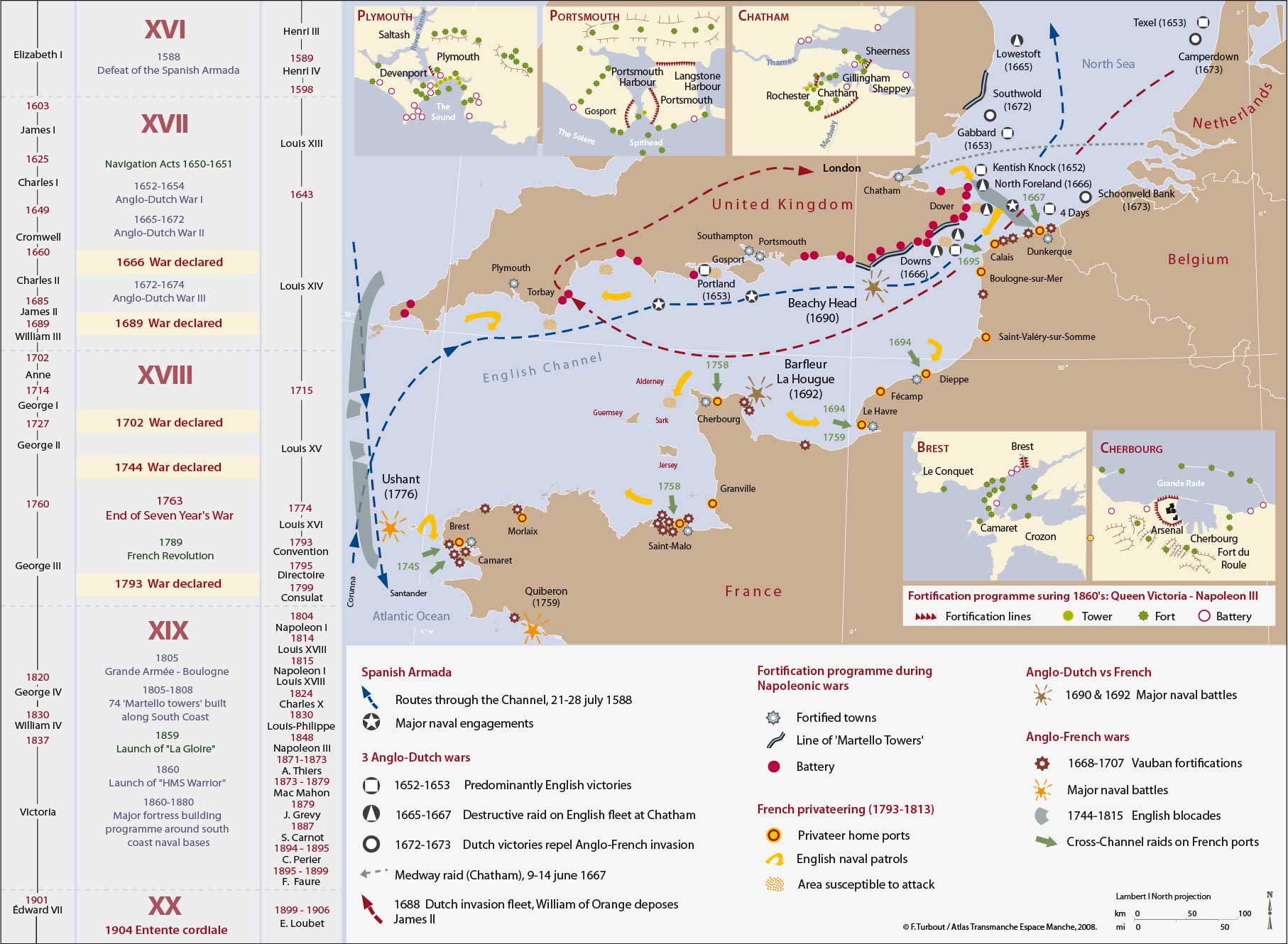

 Shared Histories
Shared Histories
In the history of confrontation between France and Britain, the use of naval power to protect shipping lanes, trading posts and colonies required secure supply lines, supported by coastal fortifications and dockyards. Three centuries of competition and conflict were punctuated by intervals of renewed investment in defence, periods of advance and retreat and constant pre-occupation with changing strategies. Of course, a more subtle form of attack was the blockade, with an ensuing disruption to trade; this was to become a major element of British naval policy during the Napoleonic Wars (1799-1815), whilst the 19th century would become that of bolstering defences. From 1860, the greatest fortress programme ever undertaken would be completed within two decades around the naval bases of Portsmouth, Chatham and Plymouth. The Cherbourg dockyard was enlarged and fortified by Napoleon IIII, one century after work was begun on the defensive harbour breakwater, and two centuries after the Battle of Barfleur-La Hougue, which underlined the need. The technology of warfare was already being revolutionised when yesterday’s fortifications were still being built, with new geopolitical configurations emerging, confirming that old antagonisms were still in play.
In 1904 the “Entente Cordiale” had brought a closing chapter to a long and chequered relationship between two great European nations on either side of the Channel. Nearly a century of peace had lapsed since the end of the seemingly endless conflicts between Britain and France known as the “Second Hundred Years War” (1689-1815) but latent fears of invasion had persisted well into the century on the English side. There was no invasion and links across the Channel have continued to multiply, politically, socially and economically. The Channel, for so long seen as “contested” is becoming a “shared space.”
top













